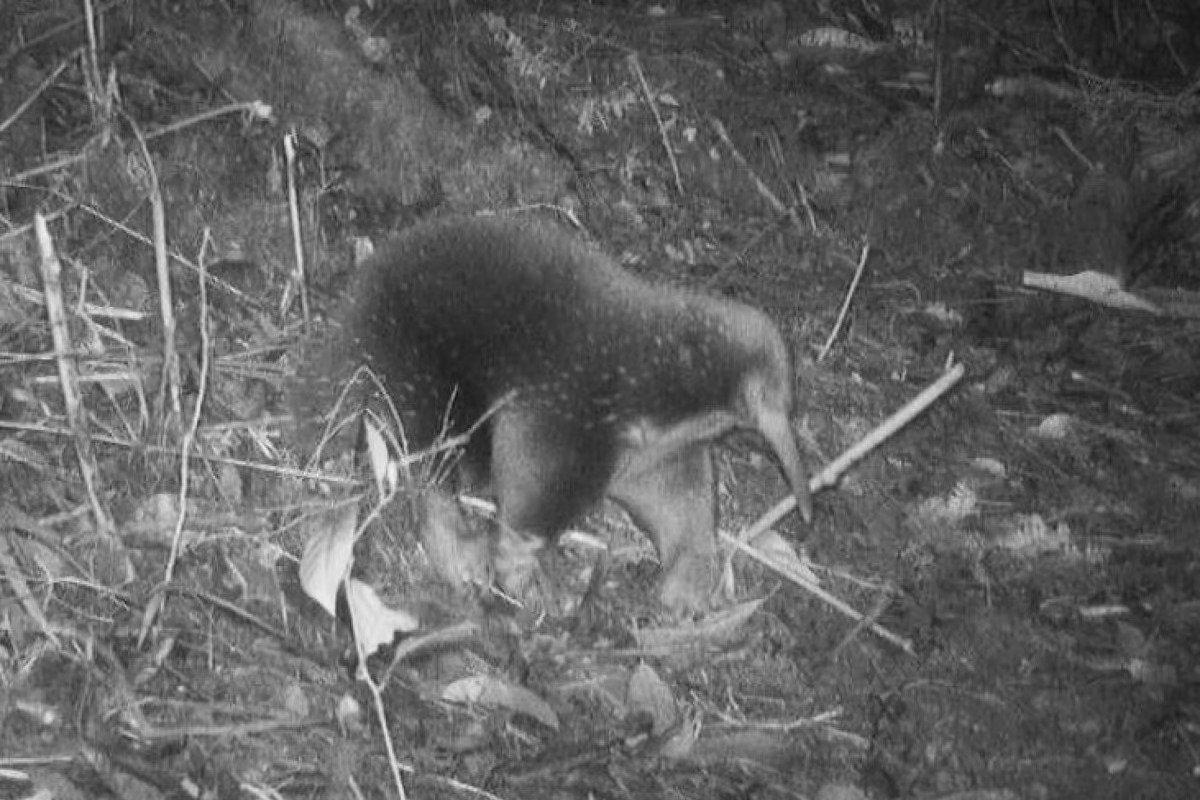In a remote and challenging terrain in Indonesia’s Papua province, scientists on the Expedition Cyclops project have achieved a groundbreaking discovery, capturing footage of the elusive Attenborough’s long-beaked echidna. Named after Sir David Attenborough, this peculiar species, with its hybrid appearance resembling a combination of a hedgehog, mole, and anteater, had been presumed extinct for over half a century. The last recorded sighting was in 1961 by Dutch botanist Pieter van Royen.
“Because of its hybrid appearance, it shares its name with a creature of Greek mythology that is half human, half serpent,” said James Kempton, a biologist from the University of Oxford who led the expedition. “The reason it appears so unlike other mammals is because it is a member of the monotremes – an egg-laying group that separated from the rest of the mammal tree-of-life about 200 million years ago.”
The Attenborough’s long-beaked echidna belongs to the monotreme group, which includes the platypus, and is one of only five remaining monotreme species on Earth. Monotremes are egg-laying mammals that separated from the rest of the mammal lineage about 200 million years ago. The species is known to be people-shy, primarily active at night, and often concealed in ground cover. Classified as Critically Endangered on the IUCN Red List of Threatened Species, it had never been recorded outside the Cyclops Mountains.
Previous expeditions in 2022 had raised hopes when distinctive ‘nose pokes’ in the soil indicated the long-beaked echidna’s presence. However, after four weeks without sightings, the Expedition Cyclops team nearly gave up. On the last day, they struck gold with video footage of the echidna captured by one of the 80 camera traps strategically placed across the challenging terrain.
The success of the expedition was attributed to the team’s collaboration with local communities, particularly the people of Yongsu Sapari, who have inhabited the Cyclops Mountains for 18 generations. The echidna holds cultural significance for them, symbolizing the end of conflicts when found. Building trust with the community, facilitated by the Indonesian NGO YAPPENDA, was crucial in navigating the treacherous mountains.
“The discovery is the result of a lot of hard work and over three and a half years of planning,” Kempton said. “A key reason why we succeeded is because, with the help of [Indonesian NGO] YAPPENDA, we have spent years building a relationship with the community of Yongsu Sapari, a village on the north coast of the Cyclops Mountains. The trust between us was the bedrock of our success because they shared with us the knowledge to navigate these treacherous mountains, and even allowed us to research on lands that have never before felt the tread of human feet.”
The Cyclops Mountains, despite their difficulty for researchers, proved to be a treasure trove of discoveries. The team identified several dozen new insect species, rediscovered Mayr’s honeyeater, and even found a new genus of ground- and tree-dwelling shrimp, challenging the conventional belief that such creatures only inhabit seaside environments. The challenging terrain took a toll on the researchers, with injuries, malaria contraction, and even a team member with a leech attached to his eye for nearly two days.
The region’s isolation from human disturbance has preserved its biodiversity, making it an ideal location for new species discoveries. The scientists collected rock samples and anticipate more findings in future research, expressing their commitment to naming newly discovered species after local community members. The challenging journey highlighted the importance of supporting colleagues on the frontlines of biodiversity research and conservation.
Despite the difficulties faced during the expedition, the scientists described the Cyclops Mountains as a magical yet dangerous environment, emphasizing the camaraderie among expedition members and the enchanting landscape.
“Though some might describe the Cyclops as a ‘Green Hell,’ I think the landscape is magical, at once enchanting and dangerous, like something out of a Tolkien book,” said Kempton. “In this environment, the camaraderie between the expedition members was fantastic, with everyone helping to keep up morale. In the evening, we exchanged stories around the fire, all the while surrounded by the hoots and peeps of frogs.”
The video footage of Attenborough’s long-beaked echidna has not only put this unique species back on the world map but has also added to the understanding of the rich biodiversity of the Cyclops Mountains and the importance of preserving such remote and ecologically significant regions.

